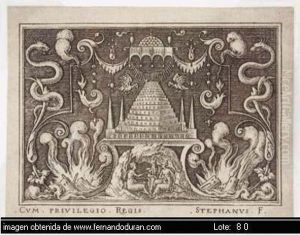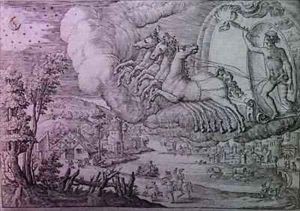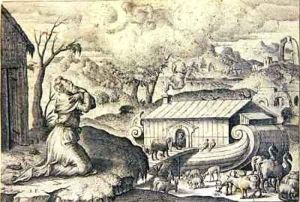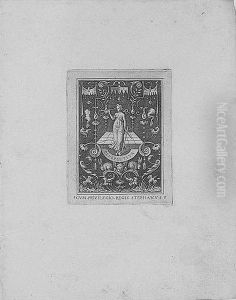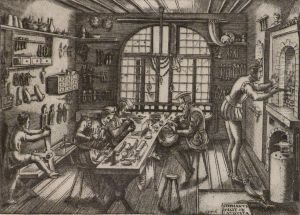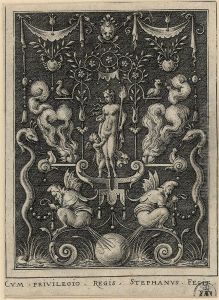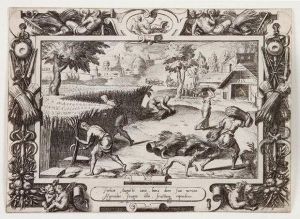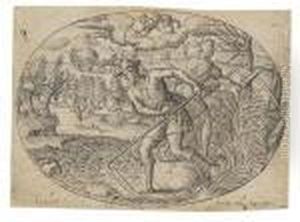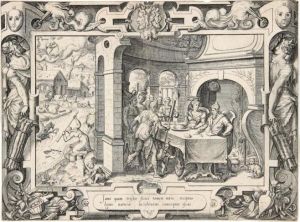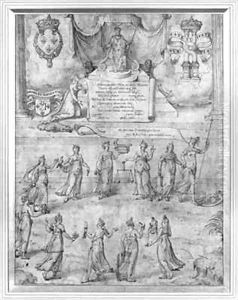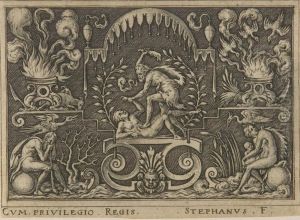Etienne Delaune Paintings
Etienne Delaune, also spelled Étienne Delaulne, was a prominent French engraver, goldsmith, and draftsman of the Renaissance period, whose work is highly regarded for its intricate detail and exquisite craftsmanship. Born in 1518 in Paris, Delaune is often celebrated for his ability to blend classical themes with the burgeoning styles of the French Renaissance, creating works that were both innovative and deeply rooted in artistic tradition.
Delaune's early life is somewhat obscure, but it is known that he initially trained as a goldsmith, a profession that undoubtedly influenced his later work as an engraver. His skills as a goldsmith, particularly in the handling of detailed designs, translated seamlessly into his engravings, which are characterized by their precise lines and elaborate ornamentation. By the mid-16th century, Delaune had established himself as a master engraver, producing works that were sought after by the French aristocracy and intellectuals of his time.
Throughout his career, Delaune was influenced by the Italian Renaissance, incorporating its elements into his own French style. His engravings often featured mythological and biblical scenes, rendered with a meticulous attention to detail that allowed him to create complex compositions filled with movement and emotion. This fusion of Italian elegance and French decorative sensibilities made Delaune's work highly distinctive.
In addition to his engravings, Delaune is noted for his contributions to the design of medals and coins, as well as his work in book illustration. His designs for decorative objects, such as plates and ewers, also demonstrate his versatility as an artist and his ability to apply his ornamental style across a range of media.
Despite his considerable talents and contributions to French art, Delaune faced challenges during his lifetime, including imprisonment for his religious beliefs. He was a Huguenot, a member of the French Protestant minority, during a time of intense religious conflict in France. This aspect of his life reflects the broader turmoil of the French Wars of Religion, which overshadowed much of his career.
Etienne Delaune passed away in 1583, leaving behind a legacy that has continued to influence artists and craftsmen. His work not only represents the height of Renaissance engraving in France but also serves as a testament to the enduring appeal of combining technical mastery with artistic innovation. Delaune's engravings continue to be studied and admired for their beauty and precision, ensuring his place among the great artists of the Renaissance.
